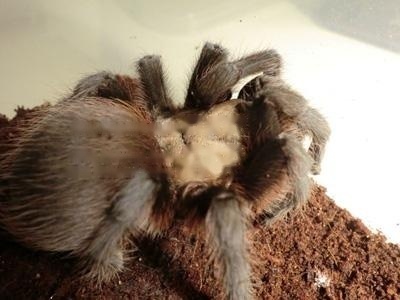
Texas Brown Tarantula
Adult body length is 13-14 cm, suitable temperature is 28-30 ℃, and suitable humidity is 65%. It is recommended to use moist peat, coconut brick and clay as the substrate. It tak
English name:Ecuador Purple-pink-footed spider
Origin: Southwest Ecuador rainforest
Ecuadorian purple toeSpider (Latin name: Avicularia purpurea) is native to the tropical rainforest of southwestern Ecuador, a species that has gradually become popular among petsA popular species among tarantula lovers, and their popularity is on the rise. Adults are 13 to 14 cm long, with a very characteristic bright purple color in adults, and a purplish gray with black patterns in juveniles, making them always a beautiful and eye-catching pet tarantula.
Chinese name: Ecuadorian purple pink toe
Latin name: Avicularia purpurea
Kingdom: Animalia
Origin: Southwest Ecuador Section
The suitable temperature is 26-28℃, and the suitable humidity is 85%. It is recommended to use moist peat, coconut brick and clay as the substrate. In feeding, it is usually necessary to place a bark for them to climb and nest. For the larvae of the genus Pinktoed, ventilation and humidity should be taken into account at the same time. Therefore, it costs more to keep them than other species of pet tarantulas more attention. In terms of feed, it is usually recommended to choose food that does not exceed 1/3 of their body size. Too much food may cause them to give up predation.
The larvae of the genus Pinktoed are easily startled, and they react by running wild or spraying white excrement. However, compared to some arboreal species of other genera, their speed is simply walking. Difficulty in reproduction and low yields, as well as their high popularity, contribute to their relatively high prices. But anyway, if you like them, try keeping them, they must be worth the money.
It is usually necessary to place a bark for them to climb and nest. For the larvae of the genus Pinktoed, ventilation and humidity should be taken into account at the same time. Therefore, it costs more to keep them than other species of pet tarantulas more attention. In terms of feed, it is usually recommended to choose food that does not exceed 1/3 of their body size. Too much food may cause them to give up predation.
Difficulty in reproduction and low yields, as well as their high popularity, contribute to their relatively high prices. But anyway, if you like them, try keeping them, they must be worth the money.